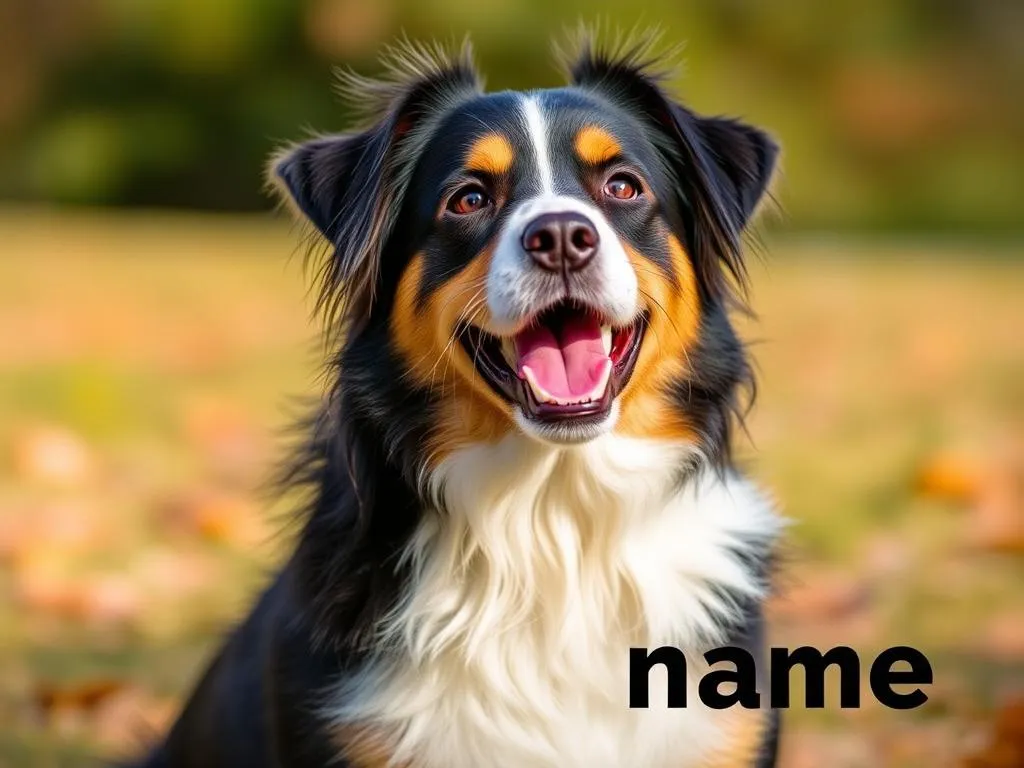
Choosing the right name for your dog is a significant decision that can impact your pet’s behavior and training. The name you select not only reflects your dog’s personality but also influences how they respond to commands and interact with you. With that in mind, let’s explore the factors to consider and the diverse themes that can inspire the perfect name for your furry friend.
Factors to Consider When Choosing a Dog Name
Dog’s Personality and Breed
When thinking about how to choose a dog name, the first step is to consider your dog’s personality and breed. Each dog has unique characteristics that can inspire name choices. For instance, a playful puppy may suit a name like “Bubbles,” while a calm and regal breed such as a Great Dane might be better suited to a name like “Titan.”
Moreover, breed characteristics can influence naming decisions. For example:
- Small breeds like Chihuahuas might inspire names that are cute and playful, such as “Peanut” or “Pixie.”
- Working dogs like German Shepherds may deserve strong names reflecting their intelligence and loyalty, such as “Ranger” or “Scout.”
Understanding your dog’s personality and breed can help you find a name that resonates with their unique traits.
Name Length and Sound
The length and sound of a dog’s name play a crucial role in effective communication and training. Short, simple names are typically easier for dogs to recognize and respond to. Aim for names that are one or two syllables, such as “Max” or “Bella.”
Additionally, certain sounds can grab a dog’s attention more effectively. Names that contain hard consonants, like “K” or “S,” are often more engaging. For example, “Ziggy” or “Sasha” may catch a dog’s ear more quickly than a longer name like “Alexander.”
Uniqueness vs. Commonality
When pondering how to choose a dog name, it’s essential to weigh the pros and cons of uniqueness versus commonality.
- Unique names can be fun and set your dog apart, but they may be harder for your dog to recognize if they sound too similar to other common words or names.
- Common names like “Buddy,” “Lucy,” or “Charlie” are easily recognizable but may lead to confusion if you’re in a park with many dogs.
Consider your lifestyle and the environment in which you’ll be with your dog when making this decision. A unique name can help avoid confusion in crowded areas, but it might take more time for your dog to learn.
Different Themes for Dog Names
Names Based on Appearance
Names inspired by a dog’s appearance can be a fun and fitting choice. Consider your dog’s coat color, size, or unique physical features. For instance:
- A fluffy white dog might be aptly named “Snowball.”
- A sleek black dog could be called “Shadow.”
- A dog with distinctive spots may inspire names like “Freckles” or “Dot.”
These names can reflect your dog’s individuality and make the naming process enjoyable.
Names Inspired by Nature
Nature provides a wealth of inspiration for dog names. Names derived from natural elements can evoke a sense of beauty and tranquility. Here are some ideas:
- River for a dog that loves water
- Willow for a dog with a gentle demeanor
- Aspen for a dog with a light, airy spirit
Seasonal names can also be a charming choice; for example, “Summer” for a sunny disposition or “Autumn” for a dog that loves to frolic in falling leaves.
Pop Culture References
Pop culture can heavily influence naming trends. Many pet owners choose names inspired by characters from movies, books, or celebrities. For example:
- “Yoda” for a wise and small dog
- “Groot” for a large and gentle giant
- “Winnie” inspired by Winnie the Pooh for a cuddly dog
These names can be whimsical and fun, reflecting your interests and passions.
Historical and Mythological Names
Names from history or mythology can add a sense of gravitas and sophistication to your dog’s name. Consider these examples:
- “Athena” for a wise female dog
- “Caesar” for a strong and commanding male dog
- “Nala” after the brave lioness from The Lion King
Choosing a name with historical or mythological significance can also be a conversation starter and add depth to your dog’s identity.
The Naming Process
Brainstorming Techniques
Brainstorming is a vital step in the naming process. Gather ideas by making lists of names that catch your eye or resonate with you. Here are some techniques to help you brainstorm:
- Mind Mapping: Create a visual representation of ideas related to your dog’s personality, appearance, and interests.
- Name Generators: Use online naming tools or apps specifically designed for pet names.
- Ask Friends and Family: Sometimes, a fresh perspective can lead to creative ideas.
Taking the time to brainstorm can reveal names that you may not have considered initially.
Testing the Name
Once you’ve narrowed down your choices, it’s crucial to test the name. Say it out loud to see how it feels and sounds. You might also want to try calling your dog with the name to see if they respond positively. Dogs often react better to names that have a cheerful tone, so consider how the name flows when spoken.
Involving Family Members
Involving family members in the naming process can create a sense of shared ownership and bonding. Discuss potential names with everyone in your household, and encourage input. This collaborative approach can lead to a name that resonates with everyone and strengthens your family’s connection to the dog.
Common Mistakes to Avoid
Names That Sound Like Commands
One of the most common pitfalls when selecting a dog name is choosing a name that sounds too similar to commands, which can confuse your pet. For instance, avoid names like “Kit” (similar to “Sit”) or “Bae” (similar to “Stay”). These similarities can lead to misunderstandings during training sessions, making it harder for your dog to learn commands.
Overly Complicated Names
While unique names can be appealing, overly complex names can hinder communication and training. Long or difficult-to-pronounce names may confuse your dog and make it challenging for them to respond. Opt for simpler alternatives that are still distinctive, like “Roxy” instead of “Roxanne Elizabeta.”
Changing Names After Adoption
If you’re adopting a dog with an existing name, changing it can pose challenges. Dogs may take time to adjust to a new name, especially if they’ve already been trained to respond to their previous one. If you decide to change your dog’s name, do so gradually. Start by using both names together, like “Buddy-Rex,” before transitioning entirely to the new name.
Conclusion
Choosing the perfect name for your dog is an essential step in establishing a bond with your new companion. By considering factors such as personality, sound, and uniqueness, alongside various naming themes, you can find a name that truly resonates with both you and your dog. Remember to take your time during the naming process, involve your family, and avoid common pitfalls to ensure that you select a name that enhances your relationship with your furry friend. A thoughtfully chosen name can not only enrich your dog’s identity but also strengthen the connection you share.
With these tips in mind, you are well-equipped to navigate the exciting journey of finding the perfect name for your beloved pet. Happy naming!









